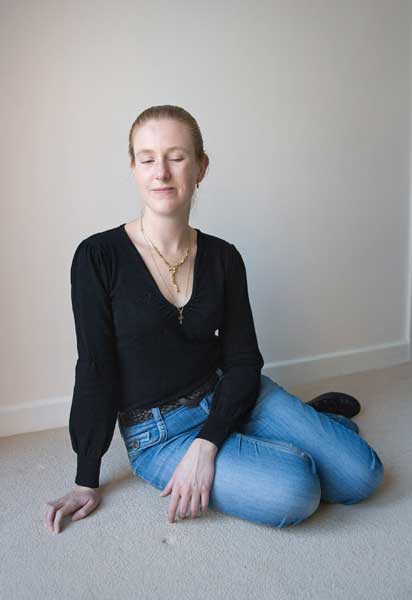First Person: 'I hear sounds in colour'
Angela Purll, 28

I was just nine years old when an accident claimed my vision, changing the way I perceived the world around me for ever.
It was during a PE class at school: I tripped over a mat that hadn't been secured properly and hit the side of my head hard on the bar of a climbing frame. The impact blinded me instantly in my left eye, the vision in my other slowly deteriorated until I was completely blind by the age of 13.
The aftermath of the situation hit my family hard; my grandfather had three heart attacks within the space of 24 hours and my father suffered a punctured stomach ulcer.
The school refused to have me back after the accident. I missed two years of school as a result. Eventually I found sanctuary at the Royal London Society for the Blind specialist school, Dorton House, in Sevenoaks, Kent.
It was there that I began to unlock my ability to hear in colour, a near- indescribable sensation which I would later learn is known as "synaesthesia". I developed my love for music at Dorton House, a passion which I'd had for many years having learnt to play the organ from the age of eight.
At Dorton, I learnt to read Braille sheet music, enabling me to revive my passion, which I took to GCSE with the unwavering support of my teachers.
I didn't learn that my ability to hear colour was synaesthesia until I was studying for my undergraduate music degree at the Trinity College of Music in Greenwich. By chance, I caught a programme on the radio about the subject and it really chimed with me.
Anything can make me sense a colour, whether it's a particular sound, smell or touch. Some sounds appear patterned, or are mixed with lighter splotches, and some can be as rich and varied as the weft of a tapestry. Higher-pitched sounds are usually lighter colours and lower-pitched ones duller.
With smell I can only sense colour when it's something particularly strong, such as a fragrant perfume, which might be a bright pink or the smell of burnt toast, which is often black or brown.
The experience of being able to sense colours started to become more apparent after I found out about synaesthesia – I began to be more aware of colours in music and started to turn this to my advantage.
It helps me to memorise pieces, and I can often translate a piece into a sketch or a drawing to visualise it. String orchestras paint a wonderfully grassy-green image for me, and compositions in a minor key often have a duller or softer tone of colour.
I like to write in the key of A or C, bright orange or yellow tones, or in D for red, livelier pieces. The key of G has a gentle, quite purple tone and works in the key of B are blue.
I performed my first composition in October at Hever church, near my home in Edenbridge, Kent. I used flute and organ to explore colours and textures that paint vibrant pictures for me.
I feel blessed with my ability today. The journey my family and I have been on since that day in the school gym 19 years ago has been long and hard, though I'm glad to say we've pulled through.
I am now studying part-time for a masters degree in music performance at Trinity College of Music. The rest of the time, I teach flute in schools and play flute, whistles and piano accordion with my folk band, Round House Folk.
Because I'm blind people presume that I live in a world of darkness. They're very wrong; I hear colour all around me in an overwhelming explosion of sensations. There are rarely any down-sides to my synaesthesia and I couldn't imagine living without it.
Join our commenting forum
Join thought-provoking conversations, follow other Independent readers and see their replies
Comments